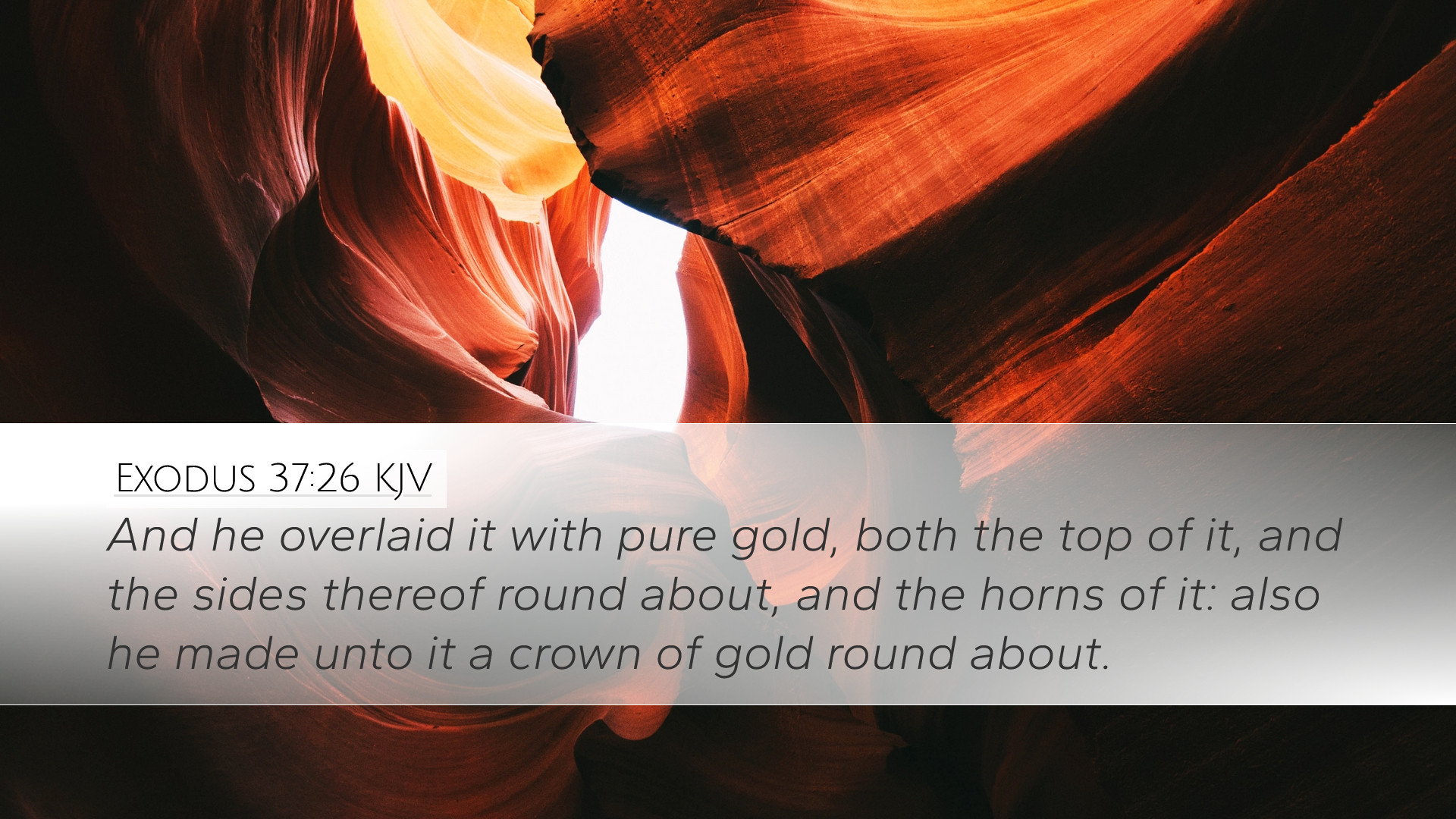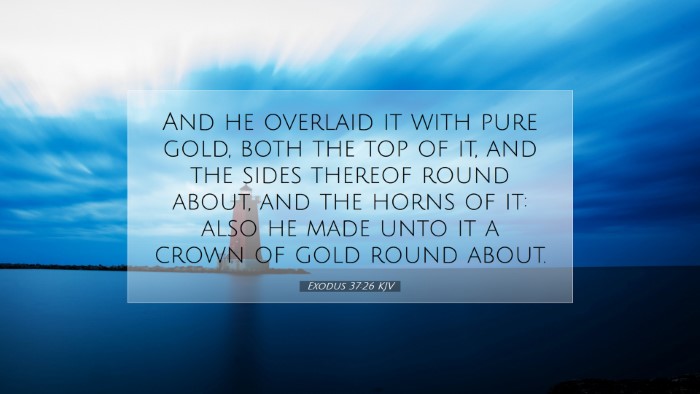Commentary on Exodus 37:26
Exodus 37:26 states, "And he put the mercy seat upon the ark of the testimony in the most holy place." This verse encapsulates a significant moment in the construction of the Tabernacle, emphasizing the theological importance of the mercy seat in relation to the ark of the covenant and the presence of God among His people.
Contextual Overview
In the book of Exodus, chapters 25 through 40 provide an extensive description of the Tabernacle and its furnishings, which are central to the Israelite worship system. The mercy seat, considered the throne of God, was placed upon the ark, representing the meeting point between God and man.
Theological Significance
This verse is critical for understanding several theological themes:
- Divine Presence: The placement of the mercy seat signifies that God's presence dwells among His people. This was foundational for the Israelites, as they understood that God led them and resided with them.
- Atonement: The mercy seat serves as a place of atonement, where blood was sprinkled during the Day of Atonement. This foreshadows the New Testament's concept of Christ as our ultimate atonement.
- Covenant Relationship: The ark contains the tablets of the covenant, symbolizing God's law. The mercy seat signifies God's willingness to forgive and restore, reflecting His covenant mercy.
Insights from Commentaries
Matthew Henry's Commentary
Matthew Henry emphasizes that the mercy seat was a type of Christ, serving as an intermediary between God and humanity. He notes that it represents not only forgiveness but also the holiness of God. The idea that God's presence is encountered on the mercy seat illustrates the accessibility of divine grace to those who seek it in faith.
Albert Barnes' Notes
Albert Barnes elaborates on the significance of the materials and construction of the mercy seat, stating that it was made of pure gold and adorned with cherubim. This detail indicates not only the value placed on God's dwelling but also the heavenly reality it represents. Barnes points out that the mercy seat is the focal point of divine revelation and grace, highlighting the seriousness of sin and the need for atonement through sacrifice.
Adam Clarke's Commentary
Adam Clarke reflects on how the mercy seat symbolizes God’s intentions towards humans: mercy as the primary attribute that believers can cling to. He draws connections between the mercy seat and the notion of Christ's sacrifice, suggesting that just as the high priest approached the mercy seat once a year, believers can now approach the throne of grace with confidence because of Jesus' atoning work. Clarke also highlights the dimensions and the cherubic figures on the mercy seat to symbolize God's holiness and the celestial nature of His presence.
Practical Applications
The implications of the mercy seat extend to various aspects of Christian life and ministry:
- Encouragement for Worship: Understanding that we have access to the mercy of God encourages believers to approach Him with confidence, fostering deeper worship.
- Call to Holiness: Recognizing the holiness of God represented by the mercy seat compels us to pursue holiness in our lives, mirroring the divine nature.
- Understanding God's Character: The mercy seat reveals the duality of God's character—His justice in dealing with sin and His mercy in providing forgiveness.
Conclusion
Exodus 37:26 serves as a profound reminder of God's presence and mercy. It illustrates the covenant relationship that God desires with His people, highlighting themes that resonate throughout Scripture—from Jewish sacrificial systems to the New Testament revelation of Jesus Christ. For pastors, theologians, and students of the Word, this verse offers rich insights into the nature of God and the significance of worship, urging all to respond to His grace with reverence and obedience.


